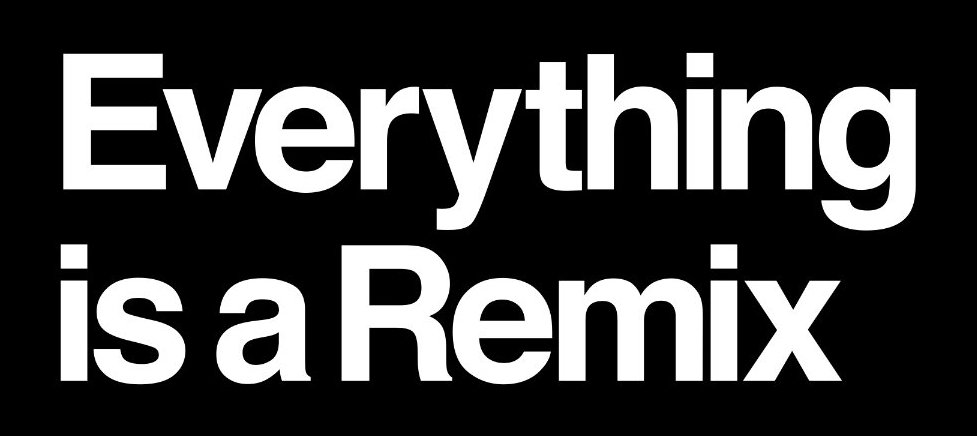EVERYTHING IS A REMIX: THE IPHONE
“This is a day I’ve been looking forward to for over two and a half years.”
On January 9, 2007 Steve Jobs took to the stage knowing he was about to reshape the technological landscape.
“Every once in a while a revolutionary product comes along that changes everything.”
And it was a revolutionary product not because of what it did but because of how you operated it.
The original iPhone was a hybrid handheld device, much like the various, rather homely gadgets of the era. So the iPhone’s features didn’t set it apart, what set it apart was its input technology: multitouch. And despite Steve Jobs’ sweeping claim…
“We have invented a new technology called multitouch.”
This was actually a technology that had been developing for decades.
However, Apple’s implementation was unprecedented. They put multitouch on a pretty affordable handheld device, not an expensive table-like contraption, which is the path others were on.
And this innovation opened up a vast frontier of possibilities. It gave Apple a blank slate — literally. The challenge was how to orient users with a device that was pretty much nothing but screen.
Firstly, the interface was grounded in a couple smart phone clichés: rows of application icons and a status bar, with battery life, signal strength, and the time. This was basically how most smart phones worked.
But from there on most of the iPhone’s interface influences came from outside the realm of smart phones, and many came from real world objects we already understood.
The device lock was like a latch, complete with a lock sound.
The keyboard tap animation was modeled after a typewriter; and there was a clicking sound to further the sensation.
The wheel for setting dates and times was like a slot machine or an odometer.
Album covers flipped over to show the track listings like an actual record or CD.
Swiping through images was like flipping thru book pages.
Emailing photos tucked them into a message, as if you were literally mailing a print.`
There were lots of switches [light switches] and lots and lots of buttons, often colored like traffic signals to imply stop or go.
And with its visual style the iPhone labored to give the illusion of depth. There was lots of bevelling, embossing, shadows, and gloss effects that simulated the qualities of three-dimensional objects.
New technologies often map their appearance and their features to technologies we already understand. This is called skew-uh-morphism.
So early cars looked like horse carriages.
Early plastic products sometimes looked like wood.
And the first commercial computer to feature a graphical user interface, the Xerox Star, based its interface on the office desktop.
But the focus on real world objects in iOS became increasingly literal.
Game Center looked like a green felt game table.
iBooks looked like a bookshelf.
And the calendar app looked like take a wild guess
And then there was the Podcasts app, which looked like a reel-to-reel tape deck… so you could get that 1970s surveillance feeling.
Now by 2010 the iPhone’s influence had utterly transformed the smart phone landscape. Multitouch devices were so widely adopted and understood, that referencing physical objects in the interface started to seem old fashioned. It was Microsoft that started stripping these cues out with Windows Phone and Android soon followed suit. This new style is being called reductionism. And this is a standard phase in the cycle of design styles. We often alternate between periods of heavy style and minimal style.
In this new era, with stronger competitors who had already copied Apple’s ideas and were even evolving them, the iPhone started to look dated and its mimicry of physical objects seemed tacky. iOS needed a refresh and rather than seeking inspiration from outside the realm of smart phones, most of its influences came from within, and its new features seemed compiled from other smart phone software.
Most immediately apparent is the 3d wallpaper feature called Parallax. This effect was demoed as early as 2009, then it was available as a jailbreak app called DeepEnd.
The Control Center has been around in various versions of Android, like TouchWiz and Android 4. The pull down notifications were copied from Android in the earlier iOS 5.
Multitasking follows the template of Android, Windows Phone and maybe even the departed Palm Pre.
The Mail application adds swiping gestures like the app Mailbox. And the swiping back gesture recalls the slide out drawers in Blackberry Android.
iRadio is simply Apple’s version of Pandora.
AirDrop is similar to the Beam features on Android, although you don’t have to press your phones together like you’re doing a smart phone mind meld.
And the visual style of iOS7 is the same approach as Windows Phone and Android. 3D embellishments are scaled back, in favor of a simplified, flatter, more iconic look.
The original iOS and iOS 7 illustrate two different kinds of copying, in two very different creative landscapes. The original iPhone was developed in an era before multitouch was mainstream. And one of the techniques Apple employed to make this new device familiar was mimicking physical objects.
IOS7 arrives in a world dominated by multitouch, where these devices are so familiar we’ve begun removing these physical references.
Surprising and delighting users in this era must be a lot harder than in 2007. But drawing influences from more surprising and delightful sources would likely help. And that’s something the original iPhone did out of necessity.
Then again, perhaps it’s not fair to expect surprise and delight from smart phones anymore. Perhaps for that we need another new frontier, we need a new blank slate.








